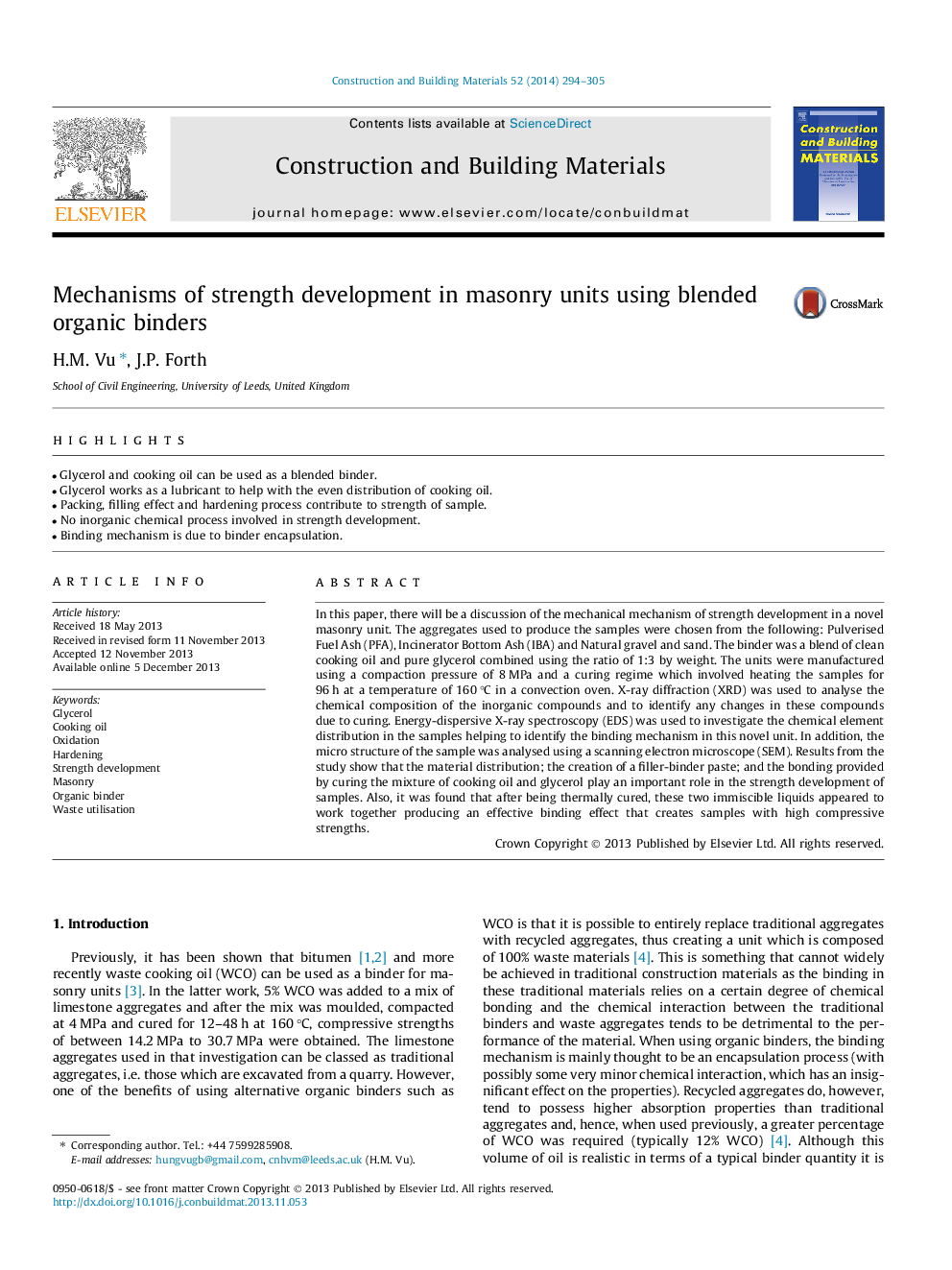| Article ID | Journal | Published Year | Pages | File Type |
|---|---|---|---|---|
| 6724435 | Construction and Building Materials | 2014 | 12 Pages |
Abstract
In this paper, there will be a discussion of the mechanical mechanism of strength development in a novel masonry unit. The aggregates used to produce the samples were chosen from the following: Pulverised Fuel Ash (PFA), Incinerator Bottom Ash (IBA) and Natural gravel and sand. The binder was a blend of clean cooking oil and pure glycerol combined using the ratio of 1:3 by weight. The units were manufactured using a compaction pressure of 8 MPa and a curing regime which involved heating the samples for 96 h at a temperature of 160 °C in a convection oven. X-ray diffraction (XRD) was used to analyse the chemical composition of the inorganic compounds and to identify any changes in these compounds due to curing. Energy-dispersive X-ray spectroscopy (EDS) was used to investigate the chemical element distribution in the samples helping to identify the binding mechanism in this novel unit. In addition, the micro structure of the sample was analysed using a scanning electron microscope (SEM). Results from the study show that the material distribution; the creation of a filler-binder paste; and the bonding provided by curing the mixture of cooking oil and glycerol play an important role in the strength development of samples. Also, it was found that after being thermally cured, these two immiscible liquids appeared to work together producing an effective binding effect that creates samples with high compressive strengths.
Keywords
Related Topics
Physical Sciences and Engineering
Engineering
Civil and Structural Engineering
Authors
H.M. Vu, J.P. Forth,
